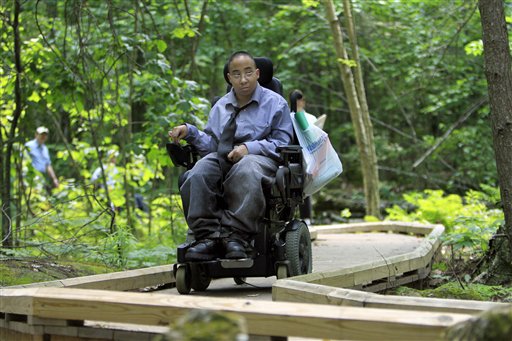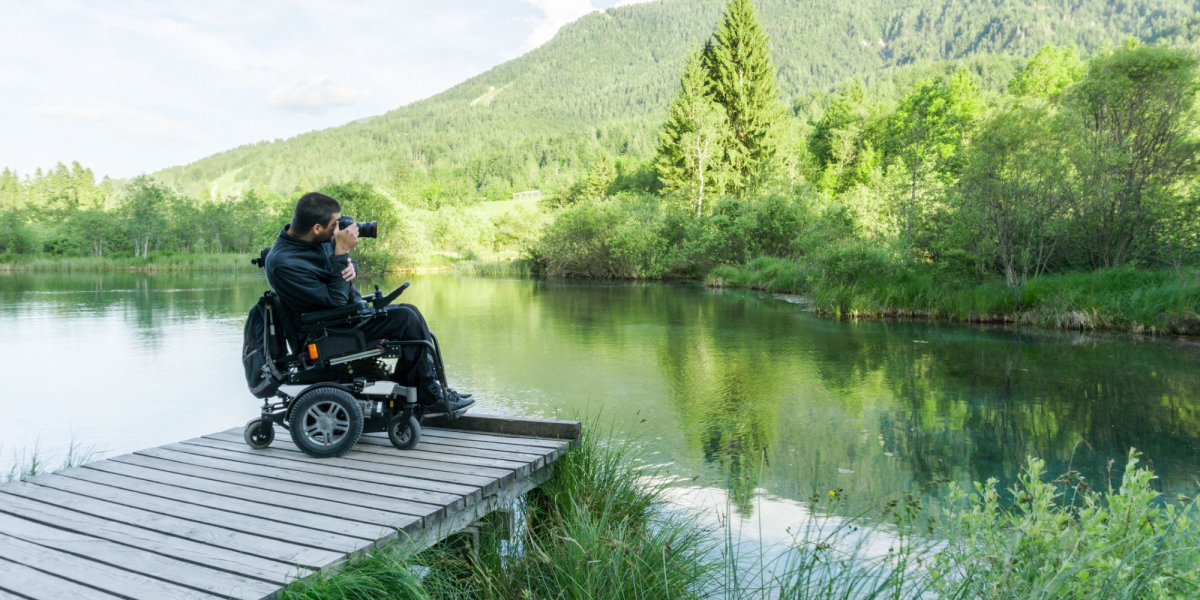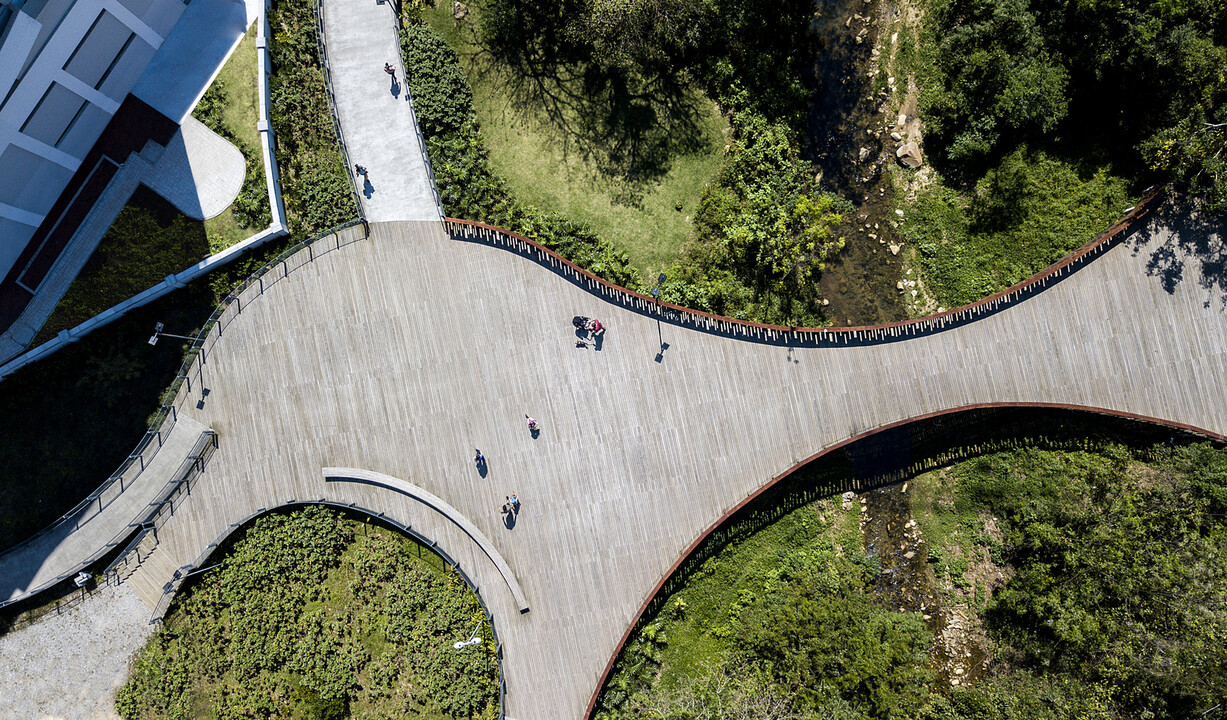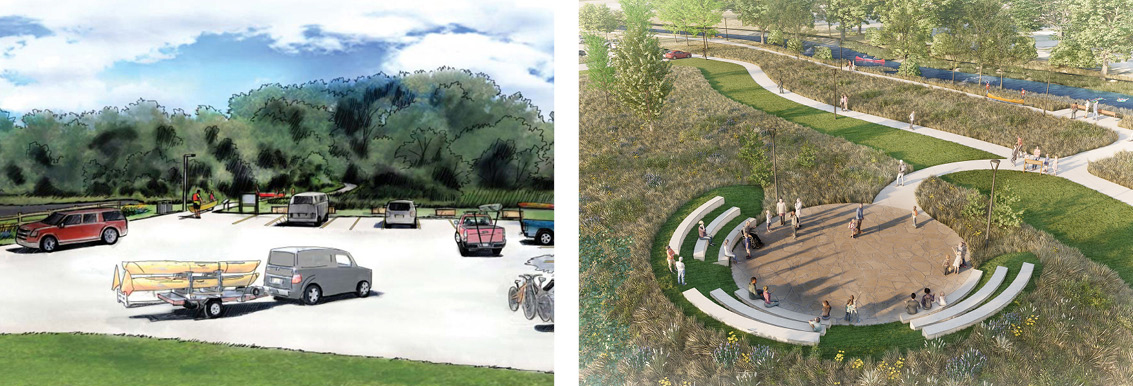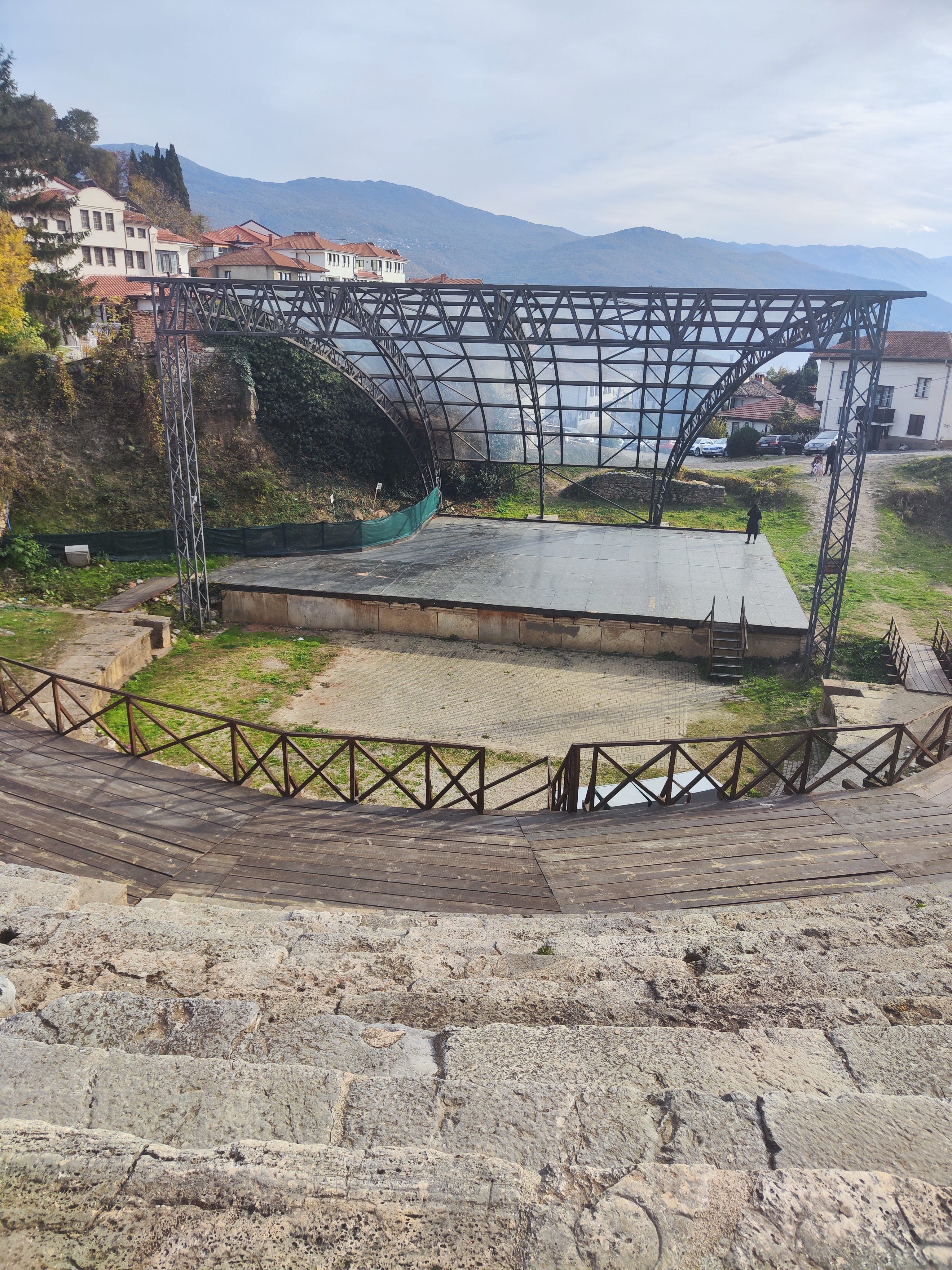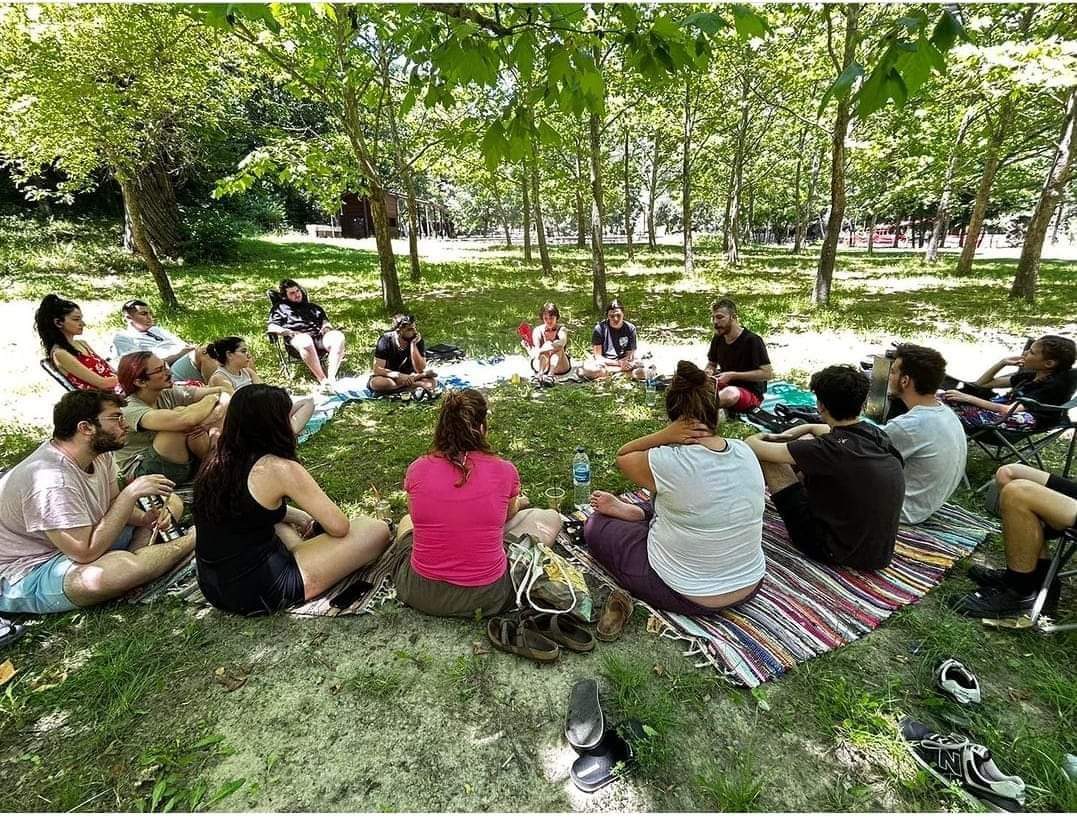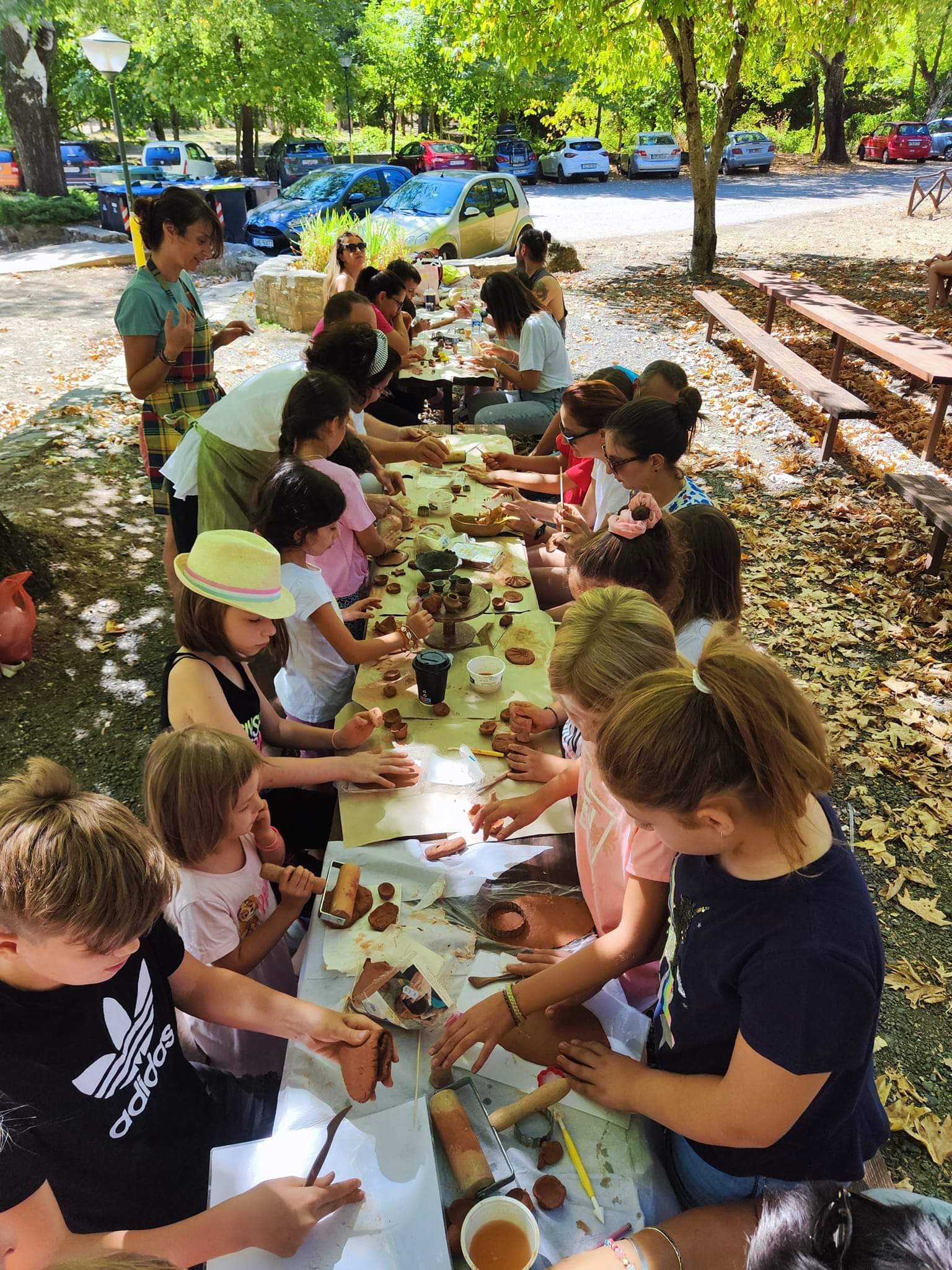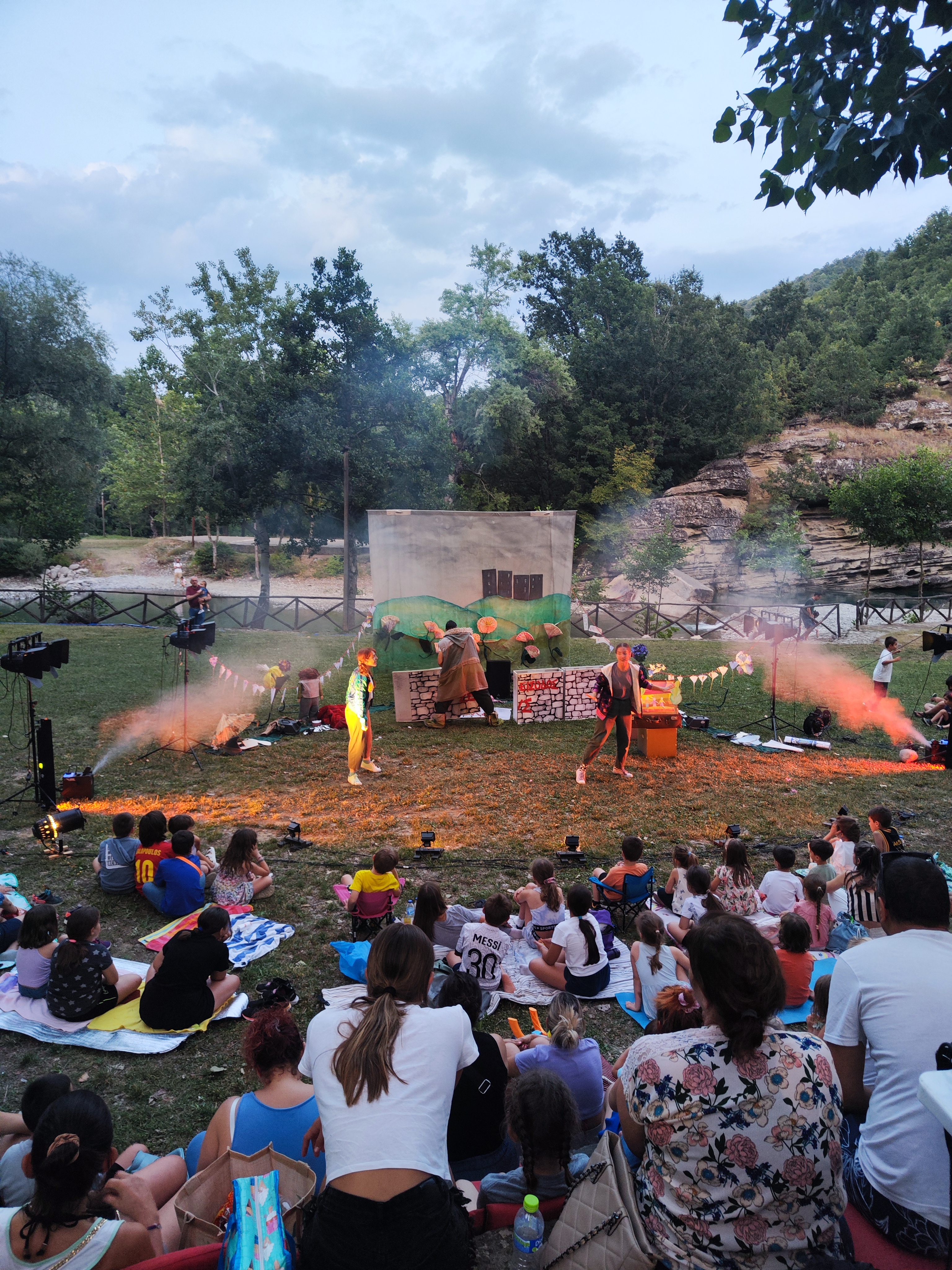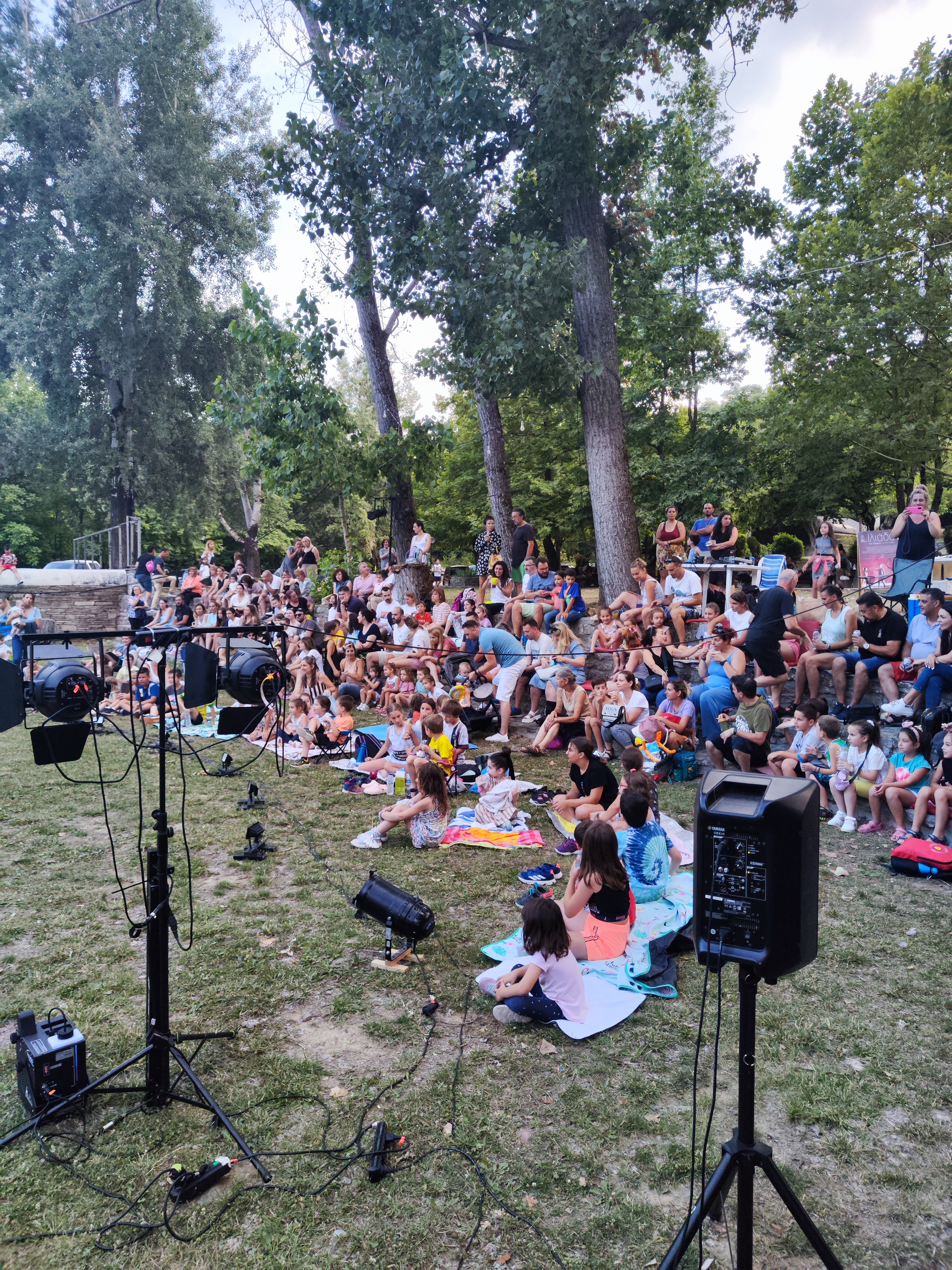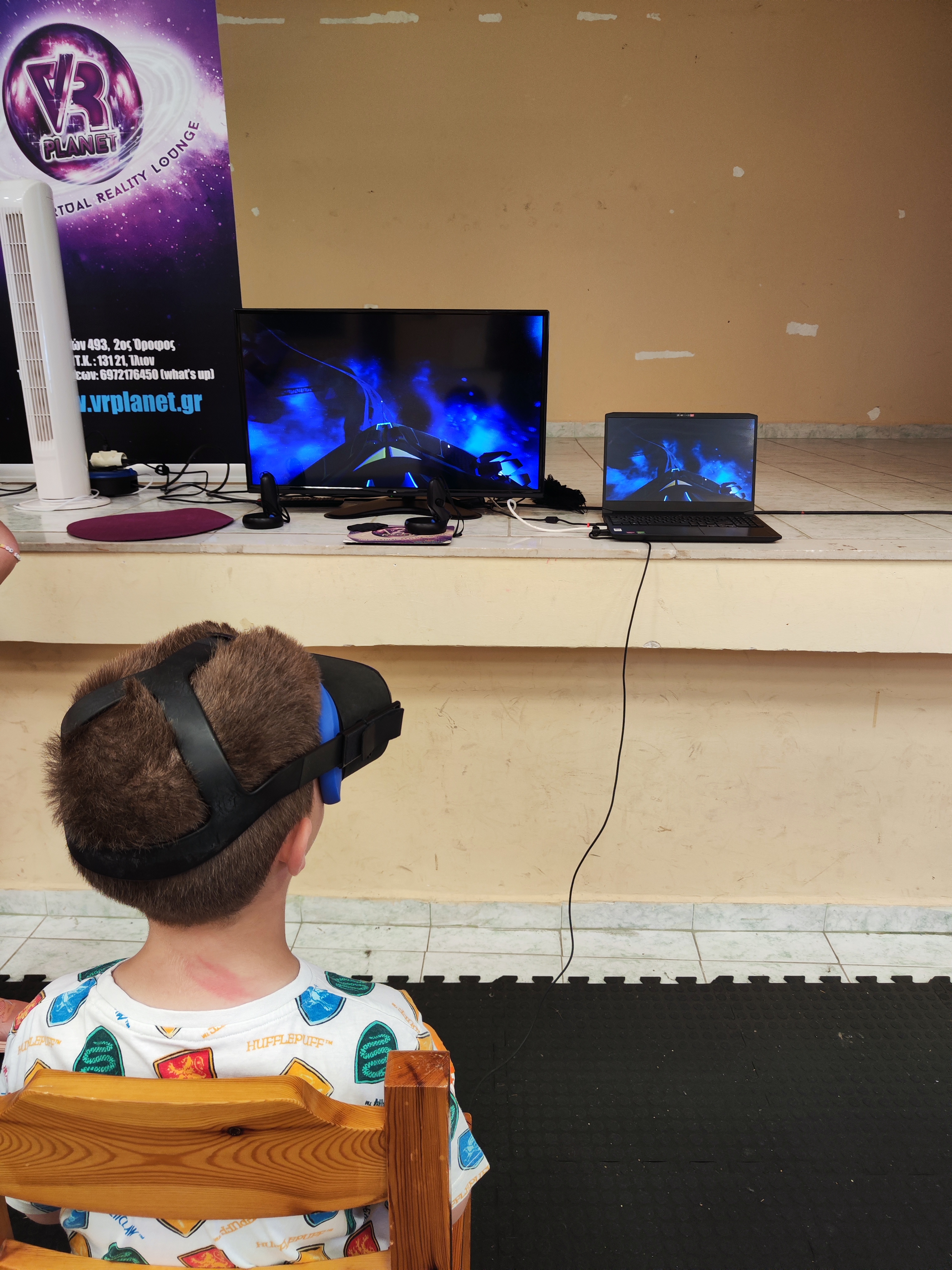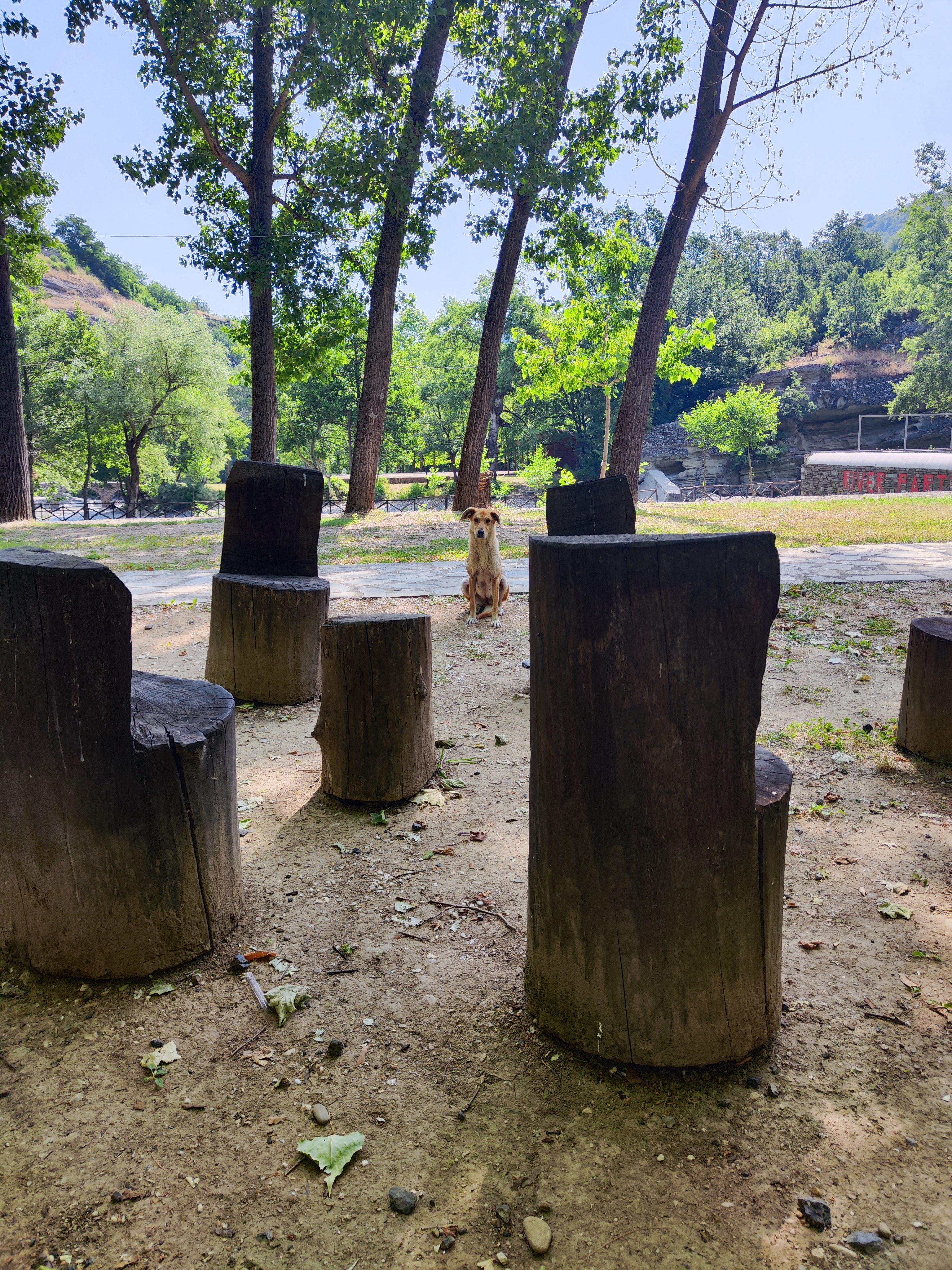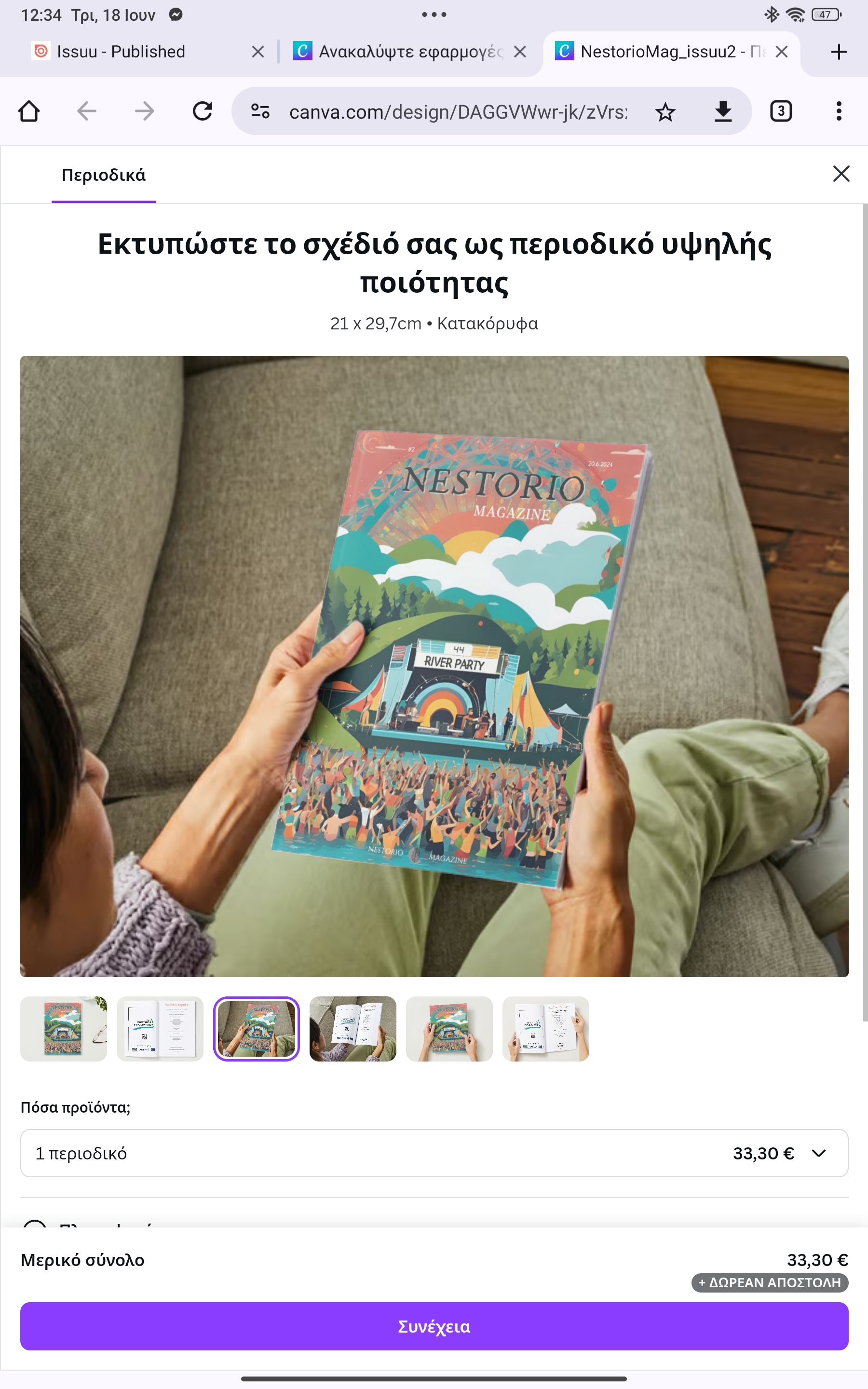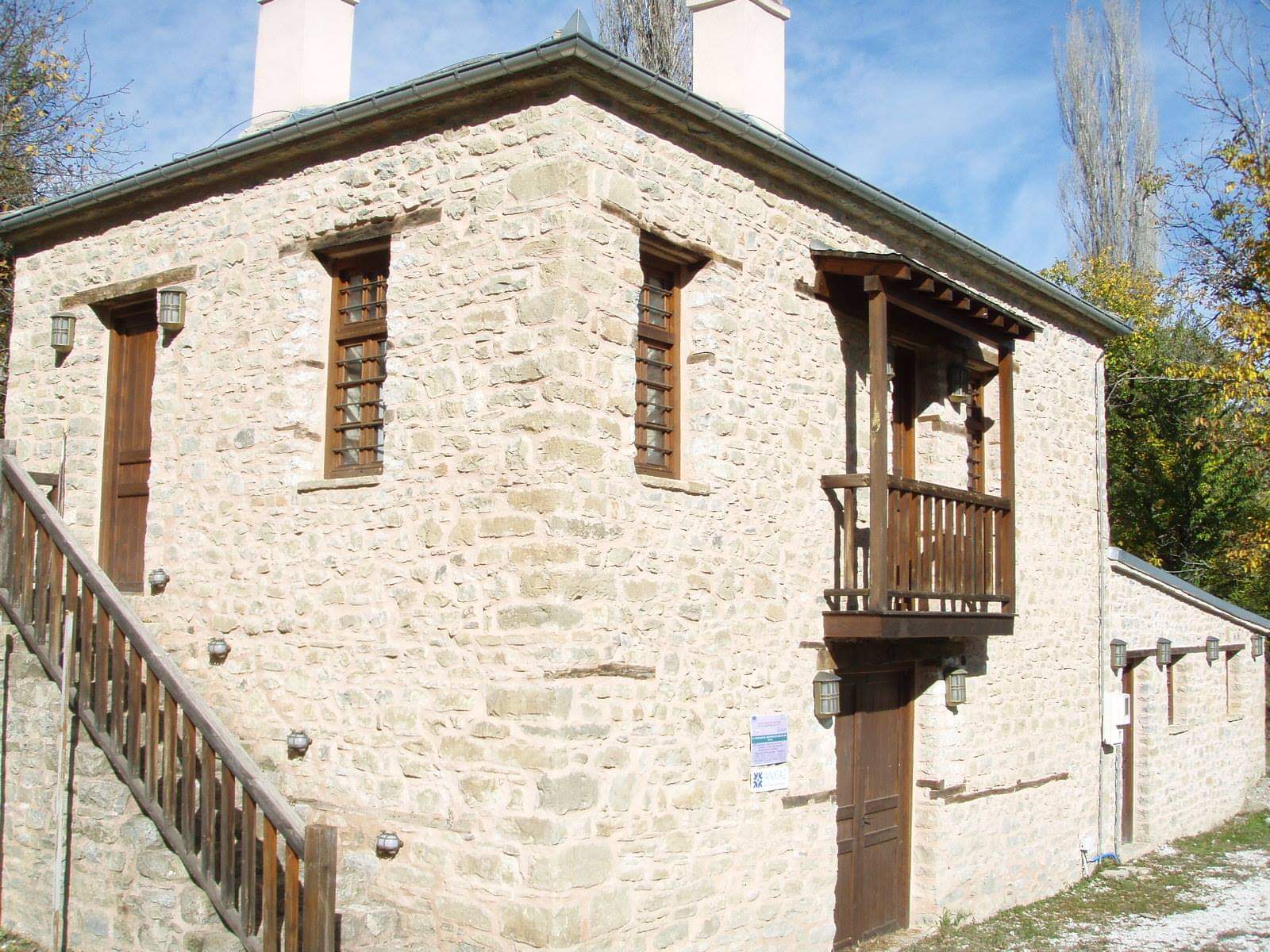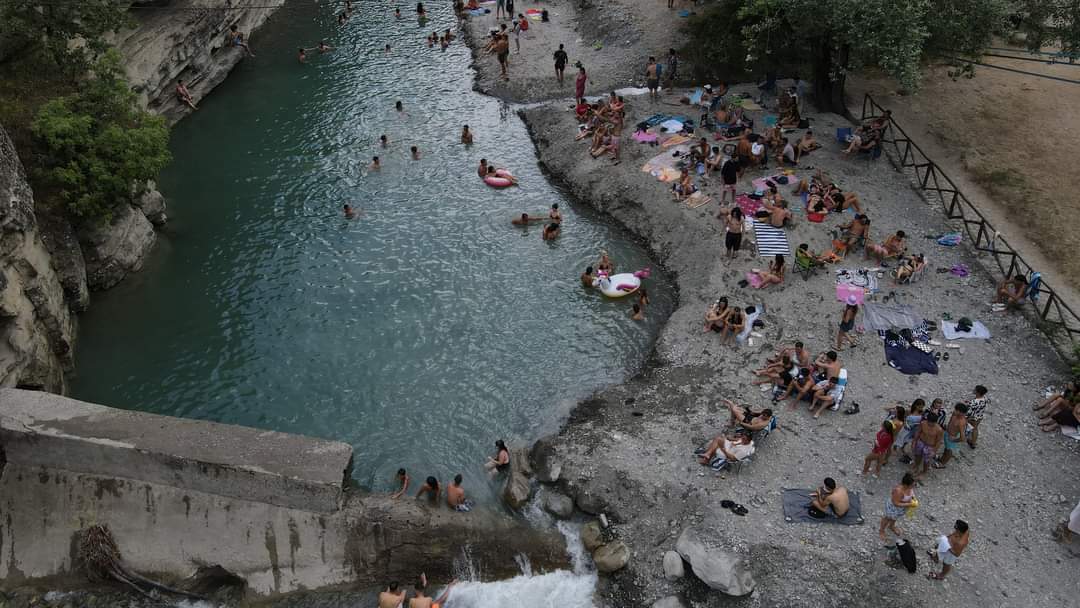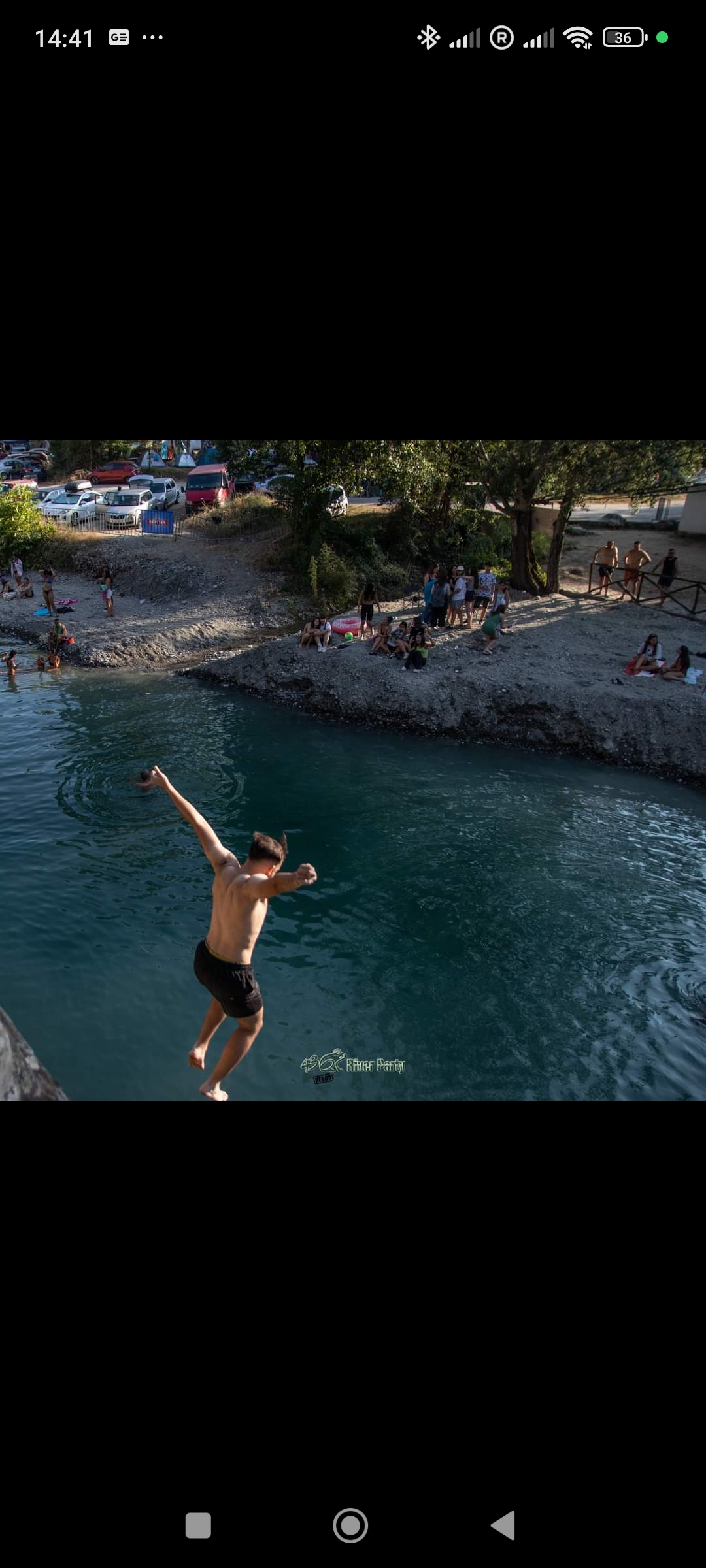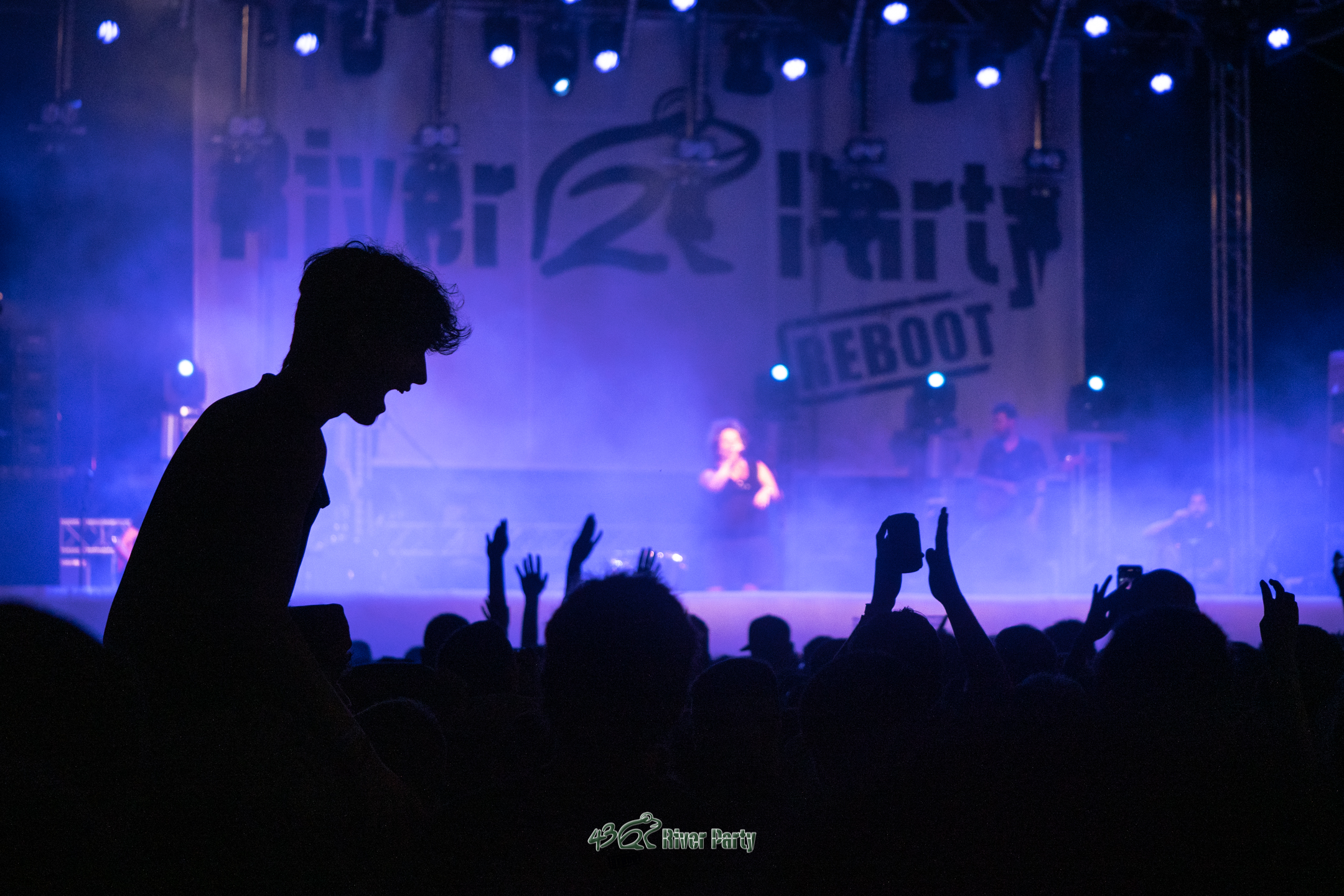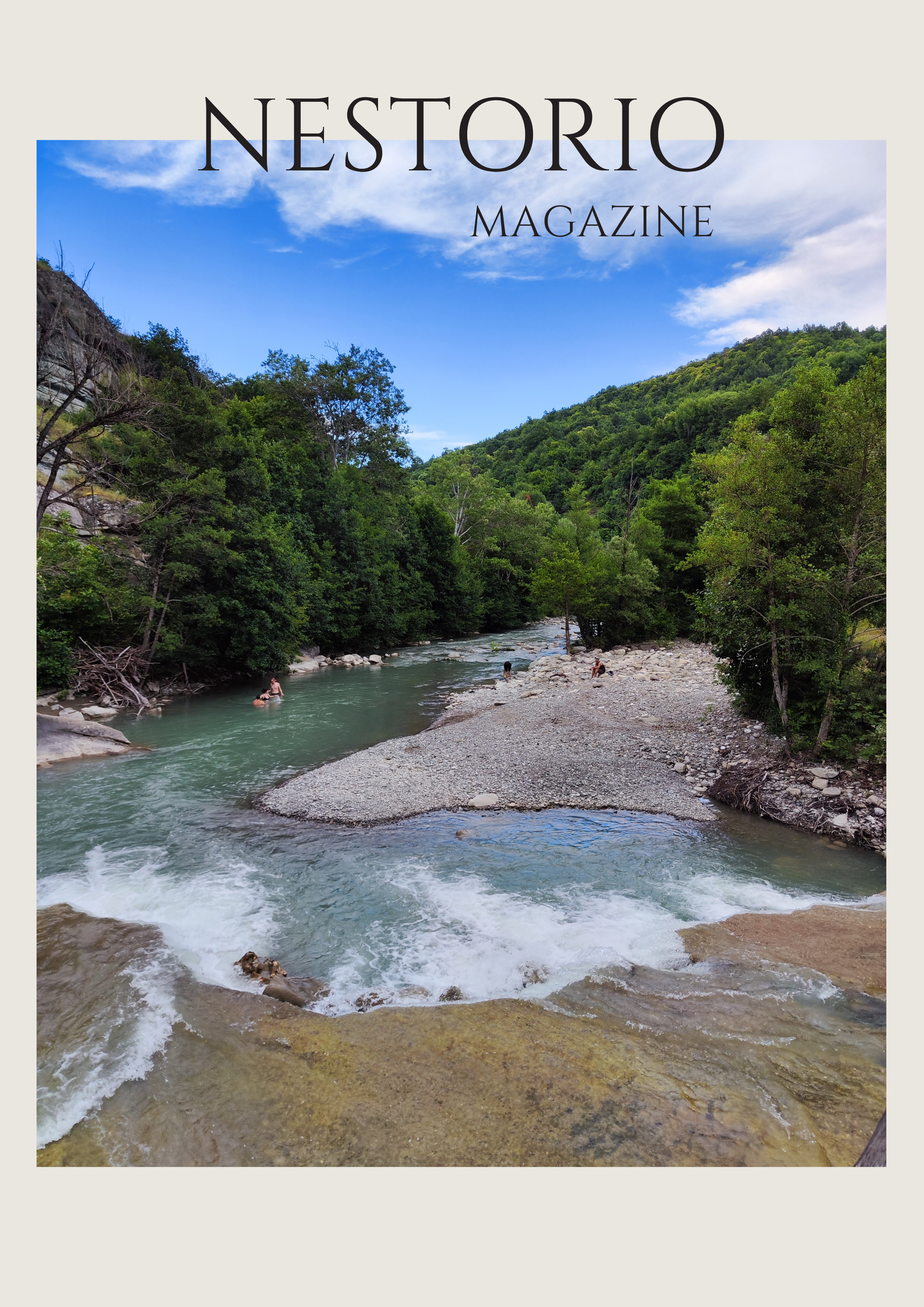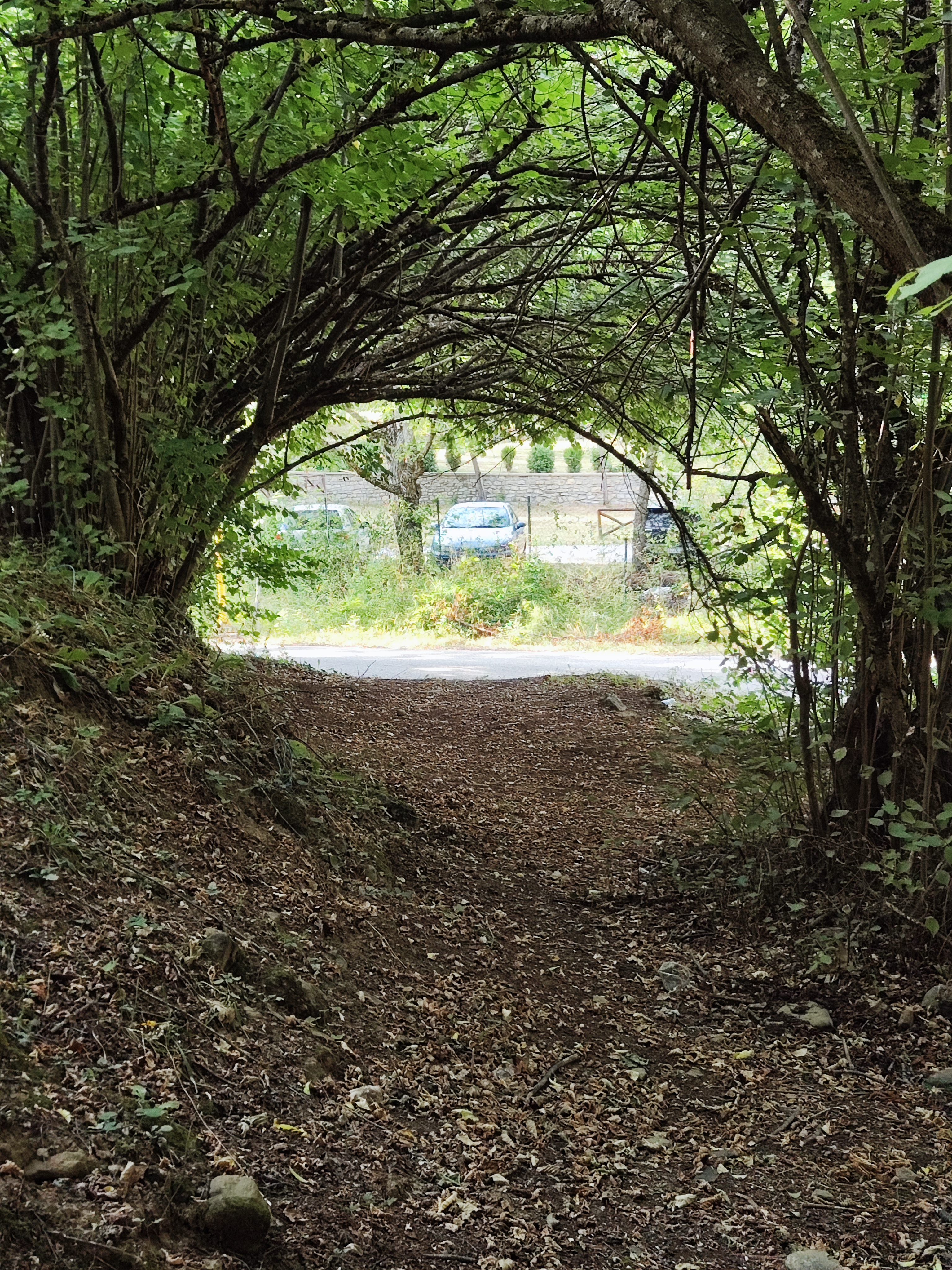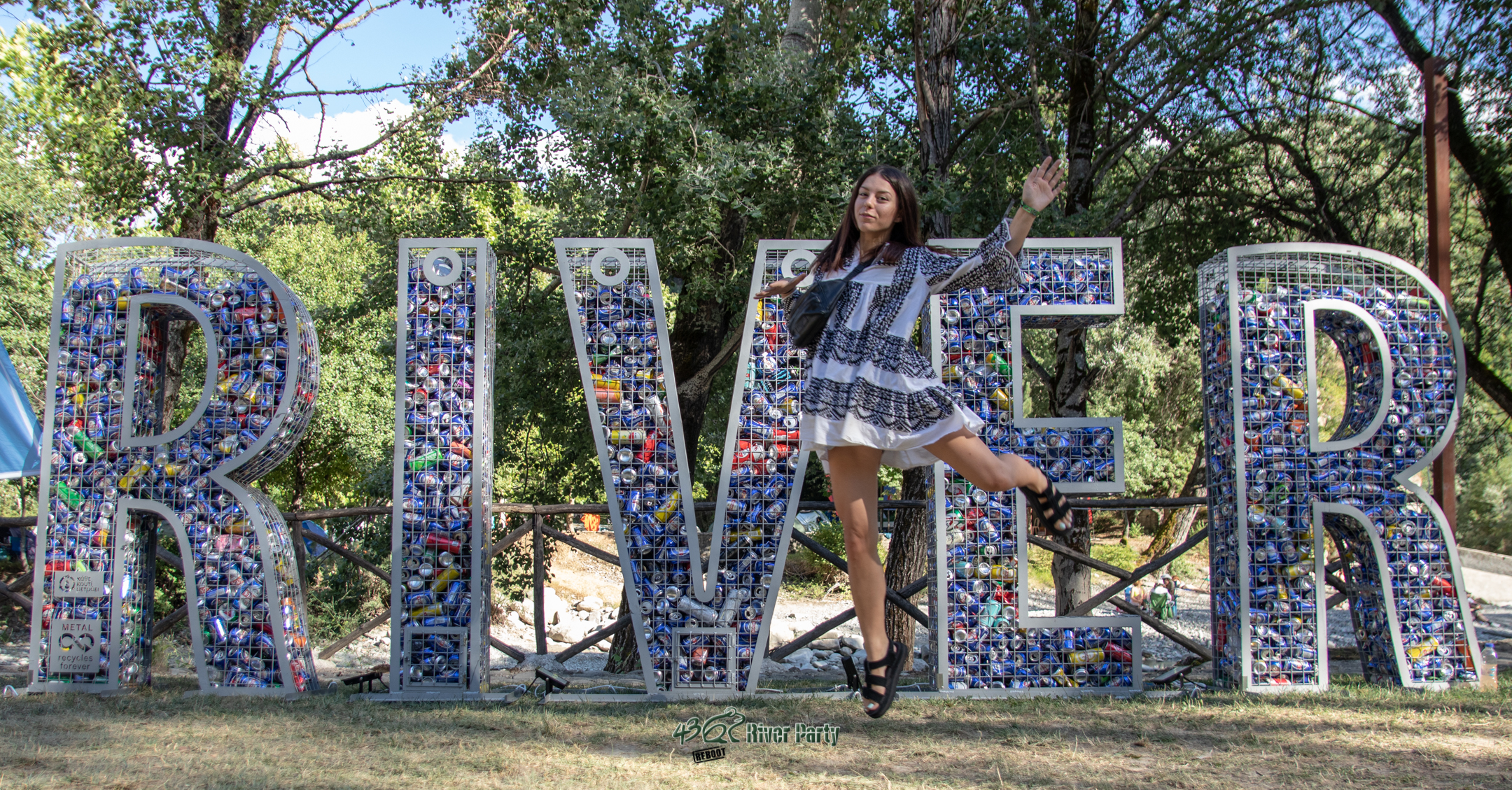Revitalizing the River Party Site
Revitalizing the River Party Site in Nestorio: Enhancing Environmental Sustainability, Accessibility
Our initiative aims to rejuvenate the iconic River Party site along the Aliakmonas River in Nestorio, transforming it into an environmentally sustainable, inclusive, and multifunctional space. By implementing eco-friendly infrastructure, enhancing accessibility for all visitors, and optimizing the site's functionality, we seek to create a harmonious natural setting that celebrates culture, community, and sustainability. This project aligns with the New European Bauhaus principles of sustainabili
Greece
Municipal Commune of Nestorio
Kastoria, Western Macedonia
P.O 52051
GREECE
Kastoria, Western Macedonia
P.O 52051
GREECE
Prototype level
Yes
Yes
Yes
No
No
16030101: Municipal Commune of Nestorio (EL)
organizers, and tourists, aiming to enhance community engagement, environmental awareness, and local economic growth.
Specific objectives include:
Implementing eco-friendly infrastructure that preserves the natural ecosystem, such as sustainable pathways, waste management systems, and energy-efficient facilities.
Improving accessibility to ensure inclusivity for all visitors, including people with disabilities, families, and elderly residents.
Enhancing the functionality of the space to support cultural and community events, thus boosting local tourism and cultural identity.
Expected outcomes are:
Increased environmental sustainability and a reduced ecological footprint through green infrastructure and responsible tourism.
Enhanced social inclusion and community interaction by creating a welcoming, accessible public space.
Revitalization of local cultural heritage and economic growth through more frequent and diverse events that attract visitors.
This initiative directly supports the New European Bauhaus values of sustainability, inclusivity, and visibility by fostering a harmonious connection between nature, culture, and community life. It will create a vibrant, environmentally conscious destination that celebrates local identity while promoting social cohesion and economic resilience.
Specific objectives include:
Implementing eco-friendly infrastructure that preserves the natural ecosystem, such as sustainable pathways, waste management systems, and energy-efficient facilities.
Improving accessibility to ensure inclusivity for all visitors, including people with disabilities, families, and elderly residents.
Enhancing the functionality of the space to support cultural and community events, thus boosting local tourism and cultural identity.
Expected outcomes are:
Increased environmental sustainability and a reduced ecological footprint through green infrastructure and responsible tourism.
Enhanced social inclusion and community interaction by creating a welcoming, accessible public space.
Revitalization of local cultural heritage and economic growth through more frequent and diverse events that attract visitors.
This initiative directly supports the New European Bauhaus values of sustainability, inclusivity, and visibility by fostering a harmonious connection between nature, culture, and community life. It will create a vibrant, environmentally conscious destination that celebrates local identity while promoting social cohesion and economic resilience.
Sustainability
Accessibility
Community Engagement
Cultural Revitalization
Environmental Awareness
Key objectives include:
Environmental Preservation: Protecting the river's ecosystem by using sustainable materials, minimizing soil disruption, and preserving native vegetation. Waste management systems and recycling points will reduce pollution, while educational signage will raise environmental awareness.
Energy Efficiency: Installing energy-efficient lighting powered by renewable sources, such as solar panels, to reduce carbon emissions and operational costs.
Water Conservation: Implementing water-efficient irrigation systems using rainwater harvesting to maintain green spaces while conserving natural resources.
Sustainable Mobility and Accessibility: Creating eco-friendly pathways and cycling routes to promote sustainable transportation and reduce the carbon footprint. Accessibility improvements will ensure inclusivity for all visitors, including those with disabilities.The initiative is exemplary in its holistic approach, combining environmental conservation with community engagement. By integrating educational elements, it empowers visitors to adopt sustainable practices. Additionally, the project demonstrates how rural public spaces can be revitalized sustainably, serving as a model for other small municipalities.
This initiative aligns with the New European Bauhaus values by fostering a balance between nature, culture, and community life, contributing to environmental sustainability and social well-being.
Environmental Preservation: Protecting the river's ecosystem by using sustainable materials, minimizing soil disruption, and preserving native vegetation. Waste management systems and recycling points will reduce pollution, while educational signage will raise environmental awareness.
Energy Efficiency: Installing energy-efficient lighting powered by renewable sources, such as solar panels, to reduce carbon emissions and operational costs.
Water Conservation: Implementing water-efficient irrigation systems using rainwater harvesting to maintain green spaces while conserving natural resources.
Sustainable Mobility and Accessibility: Creating eco-friendly pathways and cycling routes to promote sustainable transportation and reduce the carbon footprint. Accessibility improvements will ensure inclusivity for all visitors, including those with disabilities.The initiative is exemplary in its holistic approach, combining environmental conservation with community engagement. By integrating educational elements, it empowers visitors to adopt sustainable practices. Additionally, the project demonstrates how rural public spaces can be revitalized sustainably, serving as a model for other small municipalities.
This initiative aligns with the New European Bauhaus values by fostering a balance between nature, culture, and community life, contributing to environmental sustainability and social well-being.
Our initiative seeks to transform the River Party site along the Aliakmonas River into an aesthetically pleasing and culturally vibrant space that enhances the quality of experience for all visitors.
Key objectives include:
Harmonious Design with Nature: Designing eco-friendly structures and pathways that blend seamlessly with the natural landscape, preserving the scenic beauty of the river. Use of natural materials and soft landscaping will create a visually cohesive environment that fosters a sense of tranquility and connection to nature.
Enhanced Cultural Experience: Revitalizing the site as a cultural hub by creating multifunctional spaces for music events, art installations, and community gatherings. This will celebrate local heritage and enhance cultural identity while offering immersive experiences that evoke positive emotions.
Inclusive and Accessible Spaces: Ensuring that all areas are accessible to people of all abilities, promoting inclusivity and a sense of belonging. Thoughtful design elements, such as sensory gardens and shaded seating areas, will enhance comfort and engagement for diverse audiences.Positive Emotional Impact: Creating inviting spaces that encourage social interaction, relaxation, and reflection. The harmonious integration of natural and cultural elements will inspire positive emotions, well-being, and community pride.
This initiative is exemplary in its commitment to aesthetic excellence and cultural enrichment while maintaining environmental sustainability. By thoughtfully combining design, nature, and cultural programming, it offers a unique model for transforming rural public spaces into vibrant community landmarks.
Aligned with the New European Bauhaus values, the project enhances the human experience through beauty, inclusivity, and sustainability, setting a benchmark for culturally and aesthetically enriching public spaces.
Key objectives include:
Harmonious Design with Nature: Designing eco-friendly structures and pathways that blend seamlessly with the natural landscape, preserving the scenic beauty of the river. Use of natural materials and soft landscaping will create a visually cohesive environment that fosters a sense of tranquility and connection to nature.
Enhanced Cultural Experience: Revitalizing the site as a cultural hub by creating multifunctional spaces for music events, art installations, and community gatherings. This will celebrate local heritage and enhance cultural identity while offering immersive experiences that evoke positive emotions.
Inclusive and Accessible Spaces: Ensuring that all areas are accessible to people of all abilities, promoting inclusivity and a sense of belonging. Thoughtful design elements, such as sensory gardens and shaded seating areas, will enhance comfort and engagement for diverse audiences.Positive Emotional Impact: Creating inviting spaces that encourage social interaction, relaxation, and reflection. The harmonious integration of natural and cultural elements will inspire positive emotions, well-being, and community pride.
This initiative is exemplary in its commitment to aesthetic excellence and cultural enrichment while maintaining environmental sustainability. By thoughtfully combining design, nature, and cultural programming, it offers a unique model for transforming rural public spaces into vibrant community landmarks.
Aligned with the New European Bauhaus values, the project enhances the human experience through beauty, inclusivity, and sustainability, setting a benchmark for culturally and aesthetically enriching public spaces.
Key objectives include:
Universal Accessibility: Designing pathways, seating areas, and facilities that comply with universal design principles, ensuring accessibility for people of all abilities, including those with mobility challenges, parents with strollers, and elderly visitors. Ramps, tactile paving, and accessible restrooms will enhance the user experience for everyone.
Affordability and Open Access: Maintaining the site as a free, public space to ensure affordability and equal access for all social and economic groups. This approach promotes social equity and community cohesion by removing financial barriers.
Community Participation and Inclusive Governance: Involving local stakeholders, including residents, cultural groups, and local authorities, in the decision-making process. Public consultations and workshops will ensure that the design reflects the community’s needs and values, fostering a sense of ownership and belonging.
Cultural Inclusivity and Social Integration: Creating multifunctional spaces that celebrate cultural diversity and encourage social interaction. By hosting cultural events, workshops, and festivals that reflect the local heritage and traditions, the site will serve as a platform for cultural exchange and community bonding.Education and Social Awareness: Integrating educational elements about sustainability and cultural heritage to engage and educate visitors of all ages, fostering social awareness and community responsibility.
This initiative is exemplary in its holistic approach to inclusion by combining physical accessibility, cultural engagement, and community participation. It serves as a model for rural public spaces by promoting social equity, cultural integration, and inclusive governance.
Aligned with the New European Bauhaus values, the project demonstrates how inclusive design and community-driven development can enhance social cohesion and create welcoming public spaces for all.
Universal Accessibility: Designing pathways, seating areas, and facilities that comply with universal design principles, ensuring accessibility for people of all abilities, including those with mobility challenges, parents with strollers, and elderly visitors. Ramps, tactile paving, and accessible restrooms will enhance the user experience for everyone.
Affordability and Open Access: Maintaining the site as a free, public space to ensure affordability and equal access for all social and economic groups. This approach promotes social equity and community cohesion by removing financial barriers.
Community Participation and Inclusive Governance: Involving local stakeholders, including residents, cultural groups, and local authorities, in the decision-making process. Public consultations and workshops will ensure that the design reflects the community’s needs and values, fostering a sense of ownership and belonging.
Cultural Inclusivity and Social Integration: Creating multifunctional spaces that celebrate cultural diversity and encourage social interaction. By hosting cultural events, workshops, and festivals that reflect the local heritage and traditions, the site will serve as a platform for cultural exchange and community bonding.Education and Social Awareness: Integrating educational elements about sustainability and cultural heritage to engage and educate visitors of all ages, fostering social awareness and community responsibility.
This initiative is exemplary in its holistic approach to inclusion by combining physical accessibility, cultural engagement, and community participation. It serves as a model for rural public spaces by promoting social equity, cultural integration, and inclusive governance.
Aligned with the New European Bauhaus values, the project demonstrates how inclusive design and community-driven development can enhance social cohesion and create welcoming public spaces for all.
The involvement of citizens and civil society in our initiative to upgrade the party space into a fully accessible, sustainable, and culturally rich environment is paramount to its success. We have adopted a participatory approach that ensures the voices of all stakeholders are heard and integrated into the design and implementation phases.Initially, we organized a series of public consultations and workshops to engage the community. These sessions allowed residents, local cultural organizations, and civic groups to express their needs, preferences, and concerns. We prioritized inclusivity by ensuring that these gatherings were accessible to individuals of all abilities, providing translation services and accessible venues. This engagement has fostered a sense of ownership among participants, as they contribute directly to the vision and functionality of the space.The feedback gathered from the community has been instrumental in shaping the design. For instance, suggestions for specific features such as accessible pathways, sensory gardens, and multifunctional spaces for cultural events were directly incorporated. This collaborative process not only enhances the physical design but also strengthens community ties, as individuals feel valued and connected to the space. The feedback gathered from the community has been instrumental in shaping the design. For instance, suggestions for specific features such as accessible pathways, sensory gardens, and multifunctional spaces for cultural events were directly incorporated. This collaborative process not only enhances the physical design but also strengthens community ties, as individuals feel valued and connected to the space.Moreover, we have established a Community Advisory Board comprising local residents and representatives from various organizations. This board plays a crucial role in ongoing decision-making, ensuring that the initiative remains aligned with community needs and aspirations.
Engaging a diverse array of stakeholders at local, regional, national, and European levels has been integral to the design and implementation of our initiative. This multi-tiered approach ensures that the project not only addresses community needs but also aligns with broader policies and frameworks.At the local level, we initiated collaboration with residents, community groups, and local businesses through workshops and public meetings. These forums provided a platform for sharing ideas, gathering feedback, and fostering a sense of ownership among stakeholders. Local authorities were also involved early on, ensuring that the initiative adhered to municipal regulations and priorities.Regionally, we collaborated with regional development agencies and cultural organizations to align our goals with regional sustainability and cultural strategies. This partnership facilitated access to additional resources and expertise, enhancing the project's scope and impact. The regional stakeholders contributed insights on best practices and provided support in mobilizing resources for community engagement.At the national level, we engaged with government bodies responsible for urban development and public spaces. This involvement included aligning our initiative with national policies on accessibility, sustainability, and cultural heritage. We participated in national forums and conferences to share our vision and gather input, ensuring that our project supports broader national objectives.On the European level, we sought to connect with initiatives and programs aligned with the New European Bauhaus values. We engaged with European networks and stakeholders to share our approach and learn from similar projects across Europe. This exchange of knowledge has enriched our initiative, helping us adopt innovative practices and ensuring compatibility with European standards for sustainability and inclusion.
The design and implementation of our initiative reflect a multidisciplinary approach, incorporating various fields of knowledge that enhance its effectiveness and sustainability. Key disciplines involved include urban planning, architecture, environmental science, cultural studies, and social work.Urban planning and architecture play a crucial role in creating an inclusive and accessible space. Urban planners have provided insights into spatial layout and connectivity, ensuring that the design meets the needs of diverse users. Architects have focused on creating aesthetically pleasing structures that harmonize with the environment while adhering to universal design principles.Environmental science has been integral in promoting sustainability within the project. Experts in this field have guided us in implementing eco-friendly materials, energy-efficient systems, and green infrastructure, such as rain gardens and native landscaping. Their knowledge ensures that the initiative minimizes its ecological footprint and supports local biodiversity.Cultural studies have influenced our approach to community engagement and programming. Representatives from this field have helped us understand the cultural dynamics of the community, ensuring that the initiative reflects local heritage and promotes cultural diversity. This has led to the incorporation of community-led events and activities that celebrate various cultural expressions.Social work professionals have contributed to understanding the social dynamics and needs of vulnerable populations. Their input has been vital in ensuring that our initiative addresses issues of social equity and inclusion, fostering a supportive environment for all community members.The interaction among these diverse fields has been facilitated through regular interdisciplinary workshops and collaborative planning sessions.
The innovative character of our initiative lies in its holistic approach to transforming the party space into a model of inclusivity, sustainability, and cultural engagement, setting it apart from mainstream actions in similar fields. Unlike typical projects that may focus solely on physical upgrades or aesthetic enhancements, our initiative integrates multiple dimensions—accessibility, environmental stewardship, and community participation—into a cohesive framework.One of the key innovations is the emphasis on universal accessibility. While many projects may provide basic accessibility features, our initiative goes further by incorporating comprehensive design principles that cater to individuals of all abilities. This includes sensory pathways, tactile maps, and interactive installations that engage visitors in unique ways, ensuring that everyone can fully experience and enjoy the space.Additionally, our commitment to sustainability is not merely about using green materials; it encompasses a broader ecological strategy. We are implementing regenerative practices that not only minimize environmental impact but also enhance local ecosystems. This includes creating habitats for wildlife, utilizing rainwater harvesting systems, and establishing community gardens that promote biodiversity. Such a focus on regenerative design is often overlooked in mainstream initiatives, which may prioritize short-term sustainability measures. Furthermore, our initiative is distinguished by its genuine commitment to cultural inclusivity. Mainstream actions often feature cultural programming as an afterthought, whereas we have woven it into the fabric of the project from the outset. By facilitating regular community-led events and workshops that celebrate diverse cultural expressions, we are fostering ongoing social interactions and a sense of belonging among residents.Another innovative aspect is the integration of technology in enhancing user experience and engagement.
The methodology employed in our initiative is rooted in collaboration, community engagement, and resourcefulness, particularly given our status as a small municipality with limited funding opportunities and human resources. Our approach emphasizes the power of partnerships and collective action to achieve our goals.Recognizing the constraints we face, we have prioritized cooperation with various stakeholders, including local architects, artists, and the university community. This collaborative framework allows us to tap into the expertise and creativity of individuals who are passionate about contributing to the community. By inviting professionals to volunteer their time and skills, we not only enhance the quality of our project but also foster a sense of ownership and pride among participants.We have organized regular collaborative workshops and brainstorming sessions where community members, local artists, and university students can come together to share ideas and contribute to the design process. This participatory approach ensures that the initiative reflects the diverse perspectives and needs of our residents, while also empowering individuals to play an active role in shaping their environment. Additionally, we actively seek volunteers from the community who can assist with various tasks, from organizing events to helping with construction and landscaping. This grassroots involvement not only alleviates the burden on our limited resources but also builds a strong sense of community engagement and solidarity.To further enhance our initiative, we have established partnerships with local organizations, non-profits, and educational institutions. These collaborations provide access to additional resources, expertise, and funding opportunities, enabling us to expand the scope of our project. For instance, working with the local university allows us to involve students in practical projects.
Key transferable elements:
Sustainable Design & Eco-friendly Infrastructure: The use of natural materials, renewable energy sources, and waste management systems can be applied to other public spaces, reducing environmental impact while enhancing aesthetics.
Universal Accessibility & Inclusive Design: The project’s approach to making outdoor cultural and recreational spaces accessible for all—including people with disabilities, families, and elderly visitors—can serve as a best practice for similar initiatives.
Community-led Participation & Governance: The methodology of involving local residents, stakeholders, and event organizers in the planning and decision-making process fosters community ownership and can be adapted to other municipalities seeking inclusive governance models.
Cultural Activation of Public Spaces: The transformation of a natural site into a multifunctional cultural and recreational hub can be replicated in other regions looking to revitalize underused spaces for tourism, events, and community engagement.
Educational & Awareness Programs: Integrating environmental awareness, sustainability education, and cultural heritage programs into public spaces can inspire responsible tourism and long-term community engagement in sustainability.
Sustainable Design & Eco-friendly Infrastructure: The use of natural materials, renewable energy sources, and waste management systems can be applied to other public spaces, reducing environmental impact while enhancing aesthetics.
Universal Accessibility & Inclusive Design: The project’s approach to making outdoor cultural and recreational spaces accessible for all—including people with disabilities, families, and elderly visitors—can serve as a best practice for similar initiatives.
Community-led Participation & Governance: The methodology of involving local residents, stakeholders, and event organizers in the planning and decision-making process fosters community ownership and can be adapted to other municipalities seeking inclusive governance models.
Cultural Activation of Public Spaces: The transformation of a natural site into a multifunctional cultural and recreational hub can be replicated in other regions looking to revitalize underused spaces for tourism, events, and community engagement.
Educational & Awareness Programs: Integrating environmental awareness, sustainability education, and cultural heritage programs into public spaces can inspire responsible tourism and long-term community engagement in sustainability.
Key Challenges & Local Solutions:
Water Scarcity & Seasonal Droughts: Climate change has intensified dry periods, leading to lower water levels in the river. To combat this, we will introduce rainwater harvesting systems and water-efficient landscaping to reduce dependence on river water for maintenance.
Ecosystem Degradation: Reduced water flow disrupts local biodiversity. Our initiative includes riverbank restoration efforts, planting native vegetation to prevent soil erosion, support wildlife, and enhance natural water retention.
Unsustainable Water Use: Events and tourism can strain water resources. We will promote responsible water consumption through educational programs, sustainable infrastructure (low-flow sanitation facilities), and community engagement to encourage conservation practices.
Heat Island Effect & Climate Resilience: Rising temperatures increase water evaporation and make outdoor spaces less comfortable. We will introduce shaded areas with native trees, natural cooling elements, and permeable surfaces to reduce heat impact while maintaining visitor comfort.
Water Scarcity & Seasonal Droughts: Climate change has intensified dry periods, leading to lower water levels in the river. To combat this, we will introduce rainwater harvesting systems and water-efficient landscaping to reduce dependence on river water for maintenance.
Ecosystem Degradation: Reduced water flow disrupts local biodiversity. Our initiative includes riverbank restoration efforts, planting native vegetation to prevent soil erosion, support wildlife, and enhance natural water retention.
Unsustainable Water Use: Events and tourism can strain water resources. We will promote responsible water consumption through educational programs, sustainable infrastructure (low-flow sanitation facilities), and community engagement to encourage conservation practices.
Heat Island Effect & Climate Resilience: Rising temperatures increase water evaporation and make outdoor spaces less comfortable. We will introduce shaded areas with native trees, natural cooling elements, and permeable surfaces to reduce heat impact while maintaining visitor comfort.
Planned Activities for Further Development & Implementation
Our initiative focuses on renovating the River Party site along the Aliakmonas River, enhancing its facilities, pathways, and accessibility, while aligning with the New European Bauhaus (NEB) values of sustainability, inclusivity, and aesthetics.
Key Activities & Implementation Steps:
Renovation of Facilities
Upgrade rest areas, seating, and event spaces using sustainable, locally sourced materials.
Improve lighting with solar-powered fixtures for energy efficiency.
Install eco-friendly waste management solutions, including recycling and composting stations.
Improvement of Pathways & Access Routes
Develop eco-friendly walking and cycling paths, using permeable materials to reduce water runoff.
Ensure smooth, stable surfaces for wheelchair users and individuals with mobility challenges.
River Access for People with Disabilities
Create a safe, accessible river entry point, using gentle slopes and handrails.
Introduce floating platforms or adaptive seating to enable safe and comfortable access to the water.
Sustainability & Biodiversity Enhancements
Plant native vegetation to restore the riverbank, prevent erosion, and support biodiversity.
Introduce rainwater collection and irrigation systems to maintain green areas without overusing river water.
Cultural & Community Engagement
Design multipurpose spaces for music, art, and environmental workshops.
Organize volunteer programs for river clean-ups and eco-awareness campaigns.
Our initiative focuses on renovating the River Party site along the Aliakmonas River, enhancing its facilities, pathways, and accessibility, while aligning with the New European Bauhaus (NEB) values of sustainability, inclusivity, and aesthetics.
Key Activities & Implementation Steps:
Renovation of Facilities
Upgrade rest areas, seating, and event spaces using sustainable, locally sourced materials.
Improve lighting with solar-powered fixtures for energy efficiency.
Install eco-friendly waste management solutions, including recycling and composting stations.
Improvement of Pathways & Access Routes
Develop eco-friendly walking and cycling paths, using permeable materials to reduce water runoff.
Ensure smooth, stable surfaces for wheelchair users and individuals with mobility challenges.
River Access for People with Disabilities
Create a safe, accessible river entry point, using gentle slopes and handrails.
Introduce floating platforms or adaptive seating to enable safe and comfortable access to the water.
Sustainability & Biodiversity Enhancements
Plant native vegetation to restore the riverbank, prevent erosion, and support biodiversity.
Introduce rainwater collection and irrigation systems to maintain green areas without overusing river water.
Cultural & Community Engagement
Design multipurpose spaces for music, art, and environmental workshops.
Organize volunteer programs for river clean-ups and eco-awareness campaigns.

